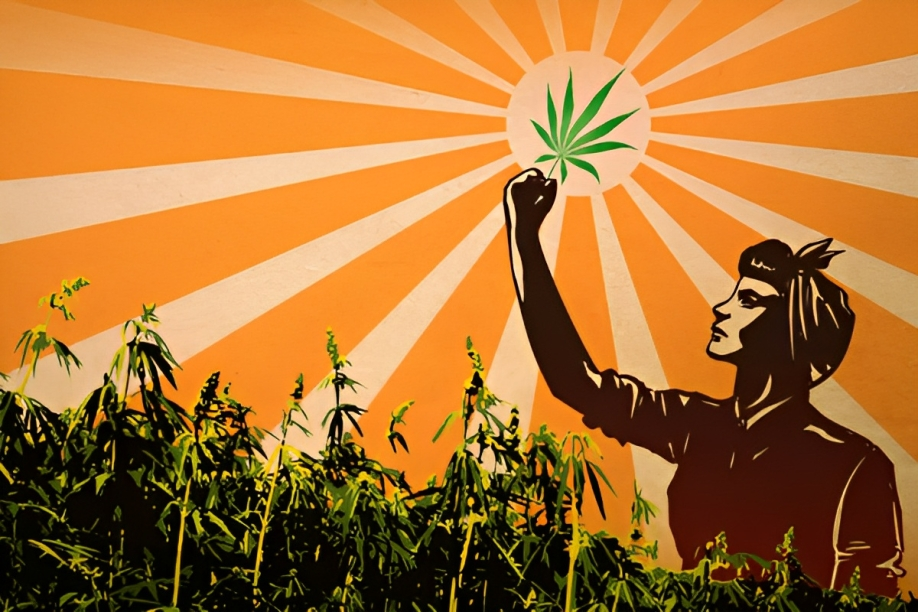
Historically, hemp has been a superior natural resource to trees. The reality is that for the past 80 years, hemp has been illegal in the majority of the world.
With the ongoing trend of using hemp for multi-purposes, there are some states who have allowed for the cultivation of hemp realising its importance.
Be it the use, sale, or cultivation of Hemp, there has been a great deal of confusion and doubt.
Industrial hemp, sometimes known as hemp, is a botanical category of Cannabis sativa cultivars developed primarily for commercial or therapeutic purposes.
Often described as the wonder plant – Rope, textiles, apparel, footwear, food, paper, bioplastics, insulation, and biofuel are just a few of the commercial and industrial items that can be made from hemp.
Hemp-based products have been in the market for quite some time now, what is the future of hemp is still a question!
Is Hemp Legal In India?
Hemp can be grown for agricultural and industrial uses under the Narcotics and Psychotropic Substances Act of 1985. The state government, however, establishes the geographical restrictions for the issuance of licences for its cultivation pursuant to Section 10 of the Act.
Section 10 of the NDPS act states, (ii) the possession, transport, import inter-State, export inter-State, sale, purchase, consumption and use of opium;
(iii) the cultivation of any cannabis plant, production, manufacture, possession, transport, import inter-State, export inter-State, sale, purchase consumption or use of cannabis (excluding charas).
The Narcotics Drugs and Psychotropic Substances Act (NDPS), which was introduced in 1985, establishes the laws governing cannabis and cannabis-related goods in India.
In contrast to seeds and leaves, which are permitted, the Act expressly forbids the sale and manufacturing of cannabis flowers.
In other words, hemp is legal as long as the THC content is 0.3% or less than 0.3%.
Clearing the Confusion
The same species of plant grows both hemp and marijuana. Legally speaking, hemp is a cannabis plant with a THC content of less than 0.3 percent, whereas marijuana is a cannabis plant with a THC content greater than 0.3 percent. Both hemp and marijuana plants can yield CBD.
The law distinguishes between “hemp” and “marijuana,” although science does not.
Tetrahydrocannabinol (THC) content is the primary distinction between the two regarding legality. Cannabis with a THC level of 0.3 percent or less by dry weight is referred to as “hemp.”

When it comes to differentiating between marijuana and hemp, their distinctive growing habits account for the discrepancy!
Any kind of Cannabis sativa with a THC content of less than 0.3% is considered hemp (tetrahydrocannabinol, the main psychoactive compound in the plant). These varieties are used to produce biodiesel, textiles, and dietary supplements like CBD.
Whereas,
Any cannabis strain with more than 0.3% THC by dried weight is considered marijuana. Cannabis sativa and Cannabis indica, closely related species, are both considered to be marijuana. The main purpose of these strains is to produce psychoactive effects.
Future of Hemp and expansion of this thriving industry
In recent years, hemp-based goods have demonstrated exponential development, potential, and demand, driven by the movement toward plant-based and sustainable industries.
Additionally, India’s history and culture are intertwined with hemp. Hemp has the potential to change the game for a nation that has been dealing with certain issues and struggling farmers.
Growth of the hemp industry will not only be solving just one issue but many of them! Hemp has the potential to boost the Indian market.
As we’re well aware, in the end, the ability of any industry to commercialise is influenced by both the individuals engaged and the laws that are in place.
In recent years, the use of hemp products has become more widespread, and as a result, India’s hemp business seems to be undergoing a transformation.


























